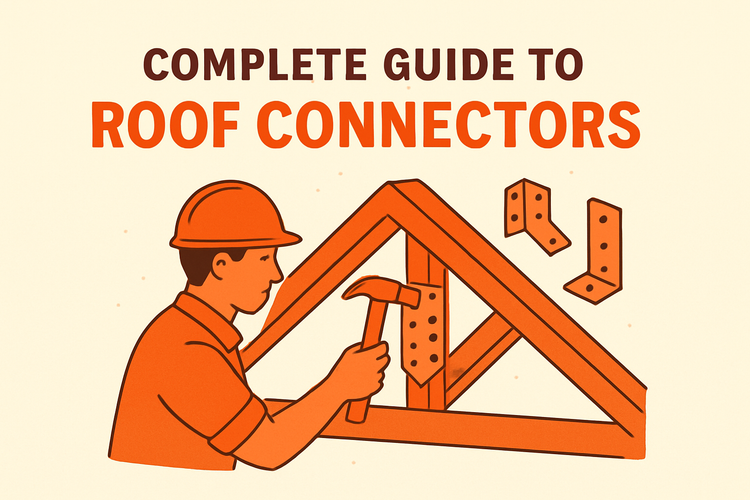Complete Guide To Roof Connectors In Construction

Understanding the Role of Roof Connectors in Structural Integrity
Roof connectors are essential components in ensuring the overall strength and stability of roof structures. These connectors securely join various timber elements, distributing loads and resisting environmental forces like wind uplift and seismic activity.
Choosing the right roof connectors can make a substantial difference in the safety, longevity, and durability of any structure. Whether working on residential construction or large-scale commercial frameworks, the performance and compatibility of connectors must align with the specific timber framing system. Products from the roof connectors category offer solutions designed to meet diverse requirements across various roofing applications.
Types of Roof Connectors and Their Applications
Roof connectors come in various forms, including truss clips, hurricane ties, and rafter straps. Each is built to meet specific structural needs based on timber size, roof pitch, and environmental conditions. Their selection typically follows a building’s load calculations and architectural design.
For example, high wind ties are crucial in regions prone to storms or hurricanes. These connectors reinforce the connection between the roof and supporting walls, helping prevent uplift and displacement. Tools from the high wind ties & timber connectors category address these extreme load scenarios efficiently, ensuring compliance with regulatory standards.
Additionally, angle brackets provide support at junctions between roof beams and wall plates. While they are generally considered simple reinforcements, their contribution to structural continuity is indispensable. Similarly, angle brackets are commonly used in conjunction with roof connectors to enhance joint integrity in timber frameworks.
Choosing the Right Connectors for Timber Types
Different types of timber, such as softwood, glulam, and cross-laminated timber (CLT), require compatible connectors for optimal performance. Compatibility is determined by factors like wood density, moisture content, and how loads are transferred through the joint.
Glulam timber, known for its enhanced structural capacity, often demands connectors that offer robust moment resistance and longer fastener lengths. The connectors for glulam timber range includes heavy-duty brackets and plates that are engineered to handle these requirements. Their performance is especially vital in large-span roof structures where joint efficiency is critical.
CLT, on the other hand, features a layered cross-sectional design, requiring connectors that can penetrate and grip layers without compromising the panel's integrity. Products within the connectors for cross laminated timber category help ensure secure, flush installations while maintaining the structural characteristics of the wood panels. For both timber types, using specified screws and fasteners from the screws and nails category is crucial for effective performance.
Installation Best Practices for Roofing Connectors
Installing roof connectors requires careful attention to detail, precise alignment, and adherence to engineered load paths. Misplaced or under-fastened connectors can compromise the structural performance of the entire roof assembly. Installers must always refer to manufacturer instructions and applicable building codes for guidance.
During installation, ensuring that joist hangers, for example, are positioned with full seat bearing and secured with specified fasteners is critical. Options from the joist hangers category offer configurations for multiple applications, such as face-mount, top-flange, and angled hangers. Proper use of these products contributes to efficient load distribution and minimizes movement under load.
Furthermore, post bases help anchor vertical members such as support columns. When installed correctly, post base products prevent wood-to-concrete contact and moisture wicking, thus extending the lifespan of the structure. Combined with roof connectors, these elements form a comprehensive system that protects from both vertical and lateral forces.
Compliance, Safety Standards, and Longevity
All roof connectors must conform to local building regulations and safety standards. Structural integrity relies not only on design but also on certified testing, durability of materials, and weather resistance. Galvanized and stainless steel options, for instance, provide improved corrosion resistance, especially in coastal or high-humidity environments.
A focus on compliance leads to enhanced building lifespan, reduced maintenance, and lowered repair costs. Structural engineers often consult performance certifications and test data when specifying connectors in construction documents. Builders should match connectors to approved timber types and specified fasteners to ensure proper engagement and long-term performance.
Comprehensive solutions sourced from categories like roof connectors cover a wide range of applications and provide peace of mind during all phases of construction. It is essential that every element, from joist hangers to angle brackets, fits within a structured and code-compliant building envelope.
